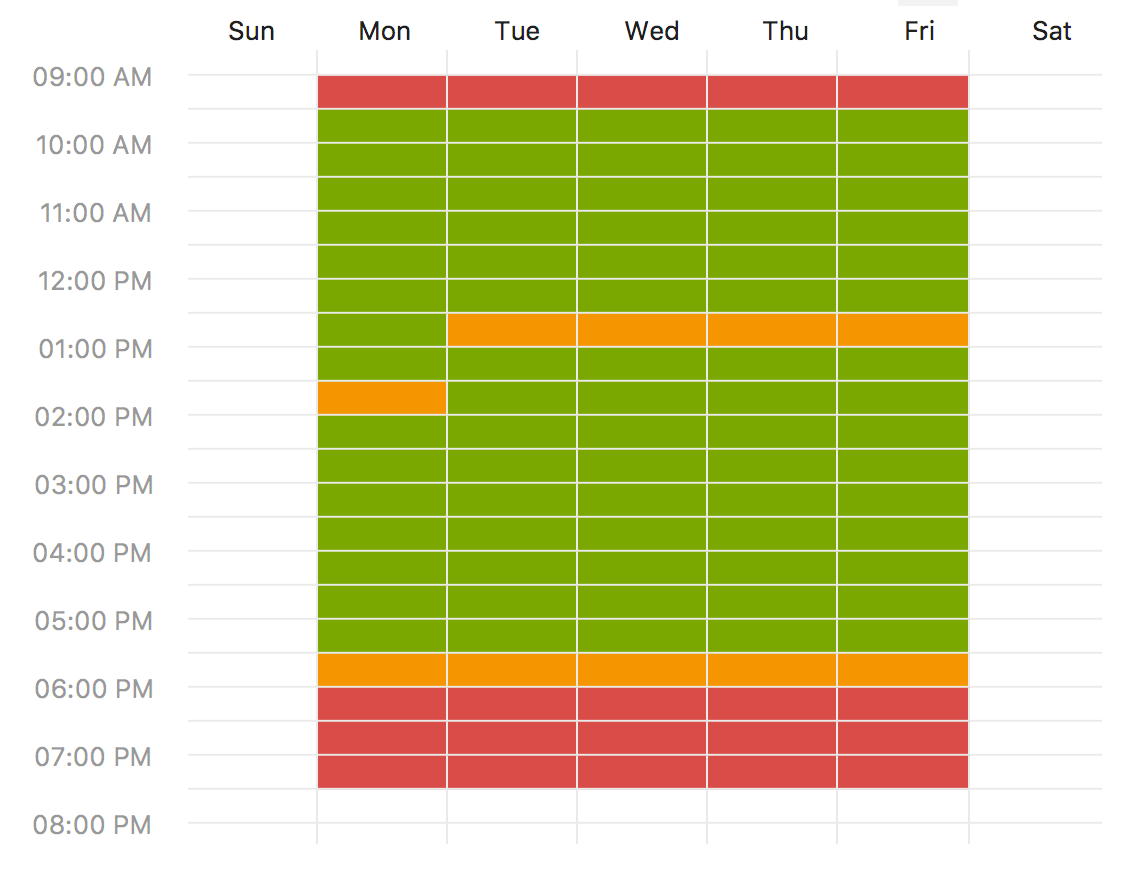
I’ve never been good at setting boundaries at work until it got to a point that I absolutely had to. I love working and I love my job. But as much as I loved it, I started to feel like it was never ending. At one point I was waking up early to work before going in the office, coming home and working through dinner, and then late into the night. I knew this wasn’t sustainable, but I didn’t know how much it would affect me until it was too late and I was completely burnt out.
It was clear that I needed to set boundaries for myself at work. Well okay, that sounds like a great idea but it’s easier said than done.
We know that working too much will burn us out but it can be almost impossible to stop. We take email and slack us wherever we go, which means a lot of us are working 24/7. It’s become so normal that some analysts are starting to talk about “work-life blending” instead of “work-life balance.”
The traditional 9-5 never existed for most of us in the workforce, and we often feel like we need to prove ourselves by responding at all hours. This is especially true for people of color who could face different repercussions for a missed email than white employees.
The problem isn’t that we’re hard and amazing workers, it’s that working too much is completely unsustainable. “Hustle is great and all, but you show me any athlete who puts in nothing but effort — not rest and proper nutrition — and I’ll show you someone who flames out quickly,” Matt Galligan, CEO and co-founder of crypto financial services firm Interchange, told Vox.
But even though the blame has been put on email and Slack, those aren’t what’s causing us to work longer hours than ever before. “We don’t have a technology problem,” Sarah Peck, founder and executive director of Startup Pregnant, told Vox, “we have a boundary problem.”
Building boundaries at work is the best way to protect your time and your hustle so you can keep pushing for your goals.
Below are the three ways I have started using in order to build boundaries at work.
1. Map out your time

One of the biggest problems I face is not that I work too much, it’s that I assume all my 24 hours are available for work.
I enjoy working, so I don’t always mind having to work late on a project, but then I end up agreeing to too much.
Since the traditional 9-5 boundary never existed for most of us, we’ve been left just allowing work to take over the rest of our lives.
We can’t rely on our jobs to make out boundaries for us, so it’s up to us to define them for ourselves.
I’ve found that time mapping, which carves out time for each area of your life, helps me know exactly how many extra hours I’m willing to put into work, and when I need to say no.
For example, using SkedPal, I’ve mapped out my time for work. The green hours are the time slots where I’m available for work, the yellow are times I can work only if needed, and the red I’m only available as a last resort. The blocks in white are when I am absolutely unavailable for work.

Mapping out my time like this gave me a much better sense of how many hours I have in a week to dedicate to work. Since I don’t mind working evenings, they are marked in yellow and red since it’s not preferred. I don’t want to have any thing scheduled when I first get into the office so I can have time to settle in, so the first half hour of my day is marked in red.
And since I clearly can understand which hours I’m available and unavailable, I can communicate these more clearly and effectively with people at the office.
Get a free 14-day trial and 10% off your SkedPal subscription by signing up here.
2. Communicate clearly

Boundaries will not work if other people don’t know about them. But communicating these boundaries can be intimidating and even frowned upon in certain offices.
The best way to communicate a boundary is before a conflict comes up. One way I’ve heard people do this at a new job is saying, “I put my kids to bed at 7pm,” or, “we don’t use cellphones at home unless it’s an emergency.”
When you make your boundary clear before a conflict comes up, you’re more likely to get people on-board. If you only say you don’t work after 7pm when your boss wants you to work late, it looks like an excuse and bad assumptions are made all around. Avoid this by letting people know up-front when you’re available.
Another tip is to not make excuses about your boundary. If you need to put your kids to bed at 7pm that’s all people need to know. They don’t need to know it’s the thing you look forward to the most all day because you get to spend some one-on-one time with the kids. When you add excuses or reasons why your boundary is your boundary, you automatically open it up for discussion instead of stating it as a fact.
My favorite way to do this is by saying, “I have a hard stop at 5pm.” In all the times I’ve heard someone use this, I’ve never heard their reasons questioned.
The last method I find that’s useful for communicating your boundaries is by showing you are flexible and happy to help during your working hours. Using the example of the “hard stop”, when I get a request that could possibly eat into my off-hours, I will usually say something like,”I have a hard stop at 5pm, but I will try and get you something before then or first thing in the morning.”
Phrasing your boundary this way shows that you are more than happy to do your job, but not after 5pm. Ironically, I find that people appreciate this more than if I just quietly worked on this task late into the night.
3. Define your protocol

Eventually, someone will cross your boundary and you will have to have a plan to address it. If a boss emails you at midnight do you respond right away, reply and say you’ll look at it in the morning, or respond first thing in the morning? The choice is up to you and up to your office culture.
I usually respond on a case by case basis. If the request isn’t that urgent but the sender sounds like they’re expecting a reply right away, I might respond that I can check on that first thing in the morning.
Do I break the rule entirely and sometimes and just send them what they were asking for after-hours? Ok yes, we can’t all be perfect. But with some self-discipline I’m learning to ignore my inbox for the most part in the evenings so that other people also don’t expect me to respond right away.
In conclusion
Every office is different and you will need to get a feel of the best way you can define, communicate, and enforce your boundaries as needed.
Using a variation of these steps, take back your day from work and help protect your hustle.
This article was originally posted on Kind North, a “not-your-average” lifestyle website for professional millennial women.

